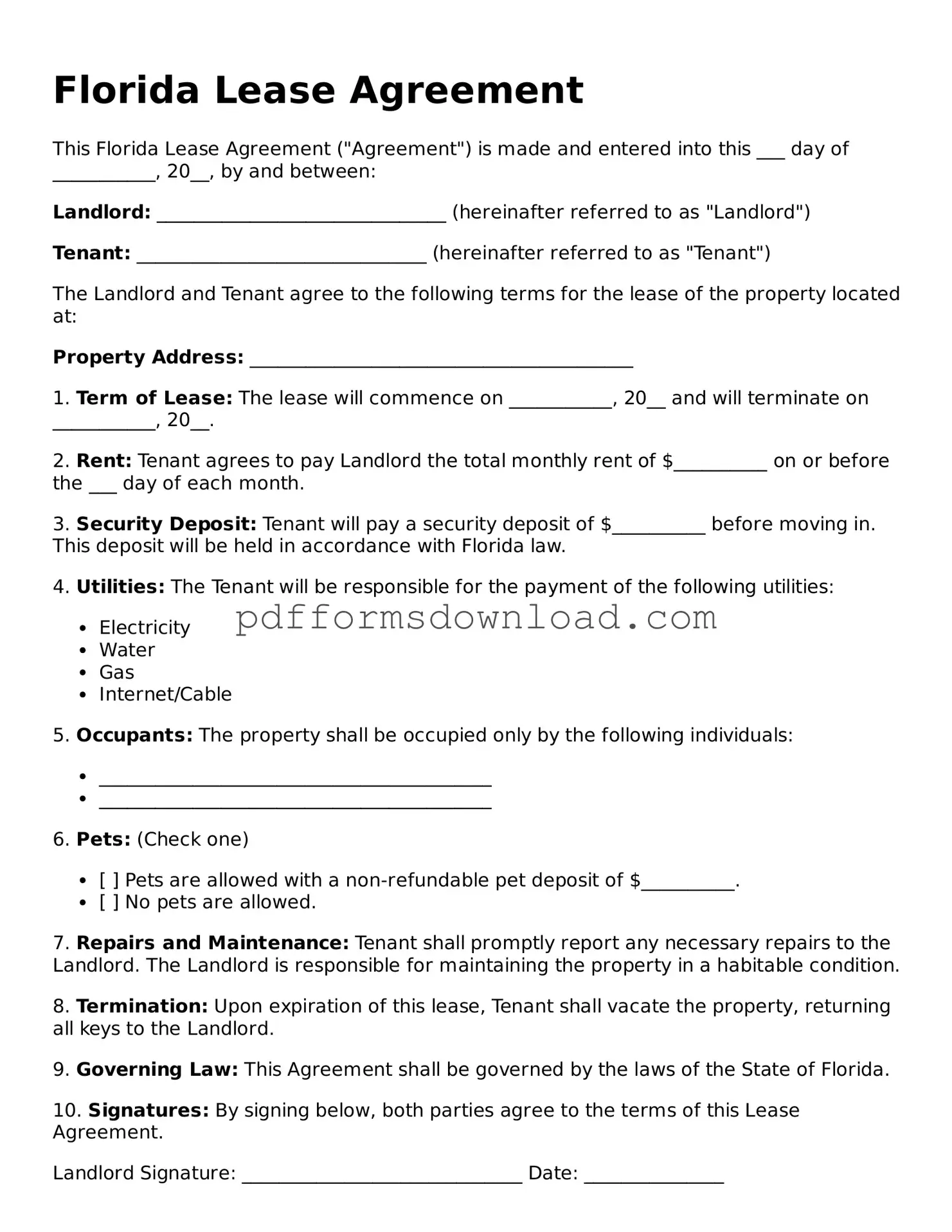What is a Florida Lease Agreement form?
A Florida Lease Agreement form is a legal document that outlines the terms and conditions under which a landlord rents property to a tenant in Florida. This agreement includes important details such as the duration of the lease, rent amount, security deposit, and responsibilities of both parties. It serves to protect the rights of both landlords and tenants, ensuring that everyone understands their obligations and expectations.
What are the essential components of a Florida Lease Agreement?
Key components of a Florida Lease Agreement typically include the names of the landlord and tenant, the property address, the lease term (whether it's month-to-month or a fixed term), the rental amount, and payment due dates. Additionally, the agreement should specify the security deposit amount, maintenance responsibilities, rules regarding pets, and procedures for terminating the lease. Clear and detailed terms help prevent misunderstandings later on.
How is a Florida Lease Agreement terminated?
Termination of a Florida Lease Agreement can occur in several ways. If the lease is for a fixed term, it automatically ends when that term expires unless renewed. For month-to-month leases, either party can typically terminate the agreement by providing written notice, usually 15 days before the next rent due date. If a tenant violates lease terms, such as failing to pay rent, the landlord may also initiate eviction proceedings, following the proper legal process.
Are there any specific laws governing Florida Lease Agreements?
Yes, Florida has specific laws that govern lease agreements. The Florida Residential Landlord and Tenant Act outlines the rights and responsibilities of both landlords and tenants. This law covers various aspects, including security deposits, eviction procedures, and the maintenance of rental properties. It's important for both parties to be familiar with these laws to ensure compliance and protect their rights.
Can a Florida Lease Agreement be modified?
A Florida Lease Agreement can be modified, but both the landlord and tenant must agree to any changes. Modifications should be documented in writing and signed by both parties to avoid confusion or disputes in the future. Common modifications may include changes to the rent amount, lease duration, or rules regarding pets. Always ensure that any changes comply with state laws to maintain the agreement's validity.
